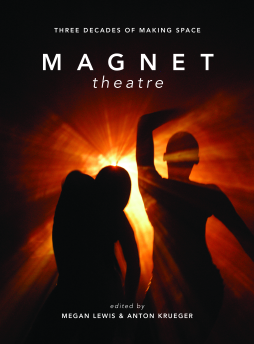
Additional Information
Book Details
Abstract
Cape Town’s Magnet Theatre has been a positive force in South African theatre for three decades, a crucial space for theatre, education, performance, and community throughout a turbulent period in South African history. Offering a dialogue between internal and external perspectives, as well as perspectives from performers, artists, and scholars, this book analyses Magnet’s many productions and presents a rich compendium of the work of one of the most vital physical theatre companies in Africa. Co-publication with UNISA Press. Co-publication with UNISA Press
Table of Contents
| Section Title | Page | Action | Price |
|---|---|---|---|
| Cover | Cover | ||
| Half Title | i | ||
| Title | iii | ||
| Copyright | iv | ||
| Contents | v | ||
| Chapter 1: Plotting the Magnetic Field: Origins and Trajectories | 1 | ||
| Production History | 37 | ||
| Part One: Concepts: Making Space for Ideas | 51 | ||
| Colour Photographs: 1987–2009 C-1 | 51 | ||
| Chapter 2: Making Space for Ideas: The Knowledge Work of Magnet Theatre | 53 | ||
| Chapter 3: An Activist Company Inventing a Future: A Conversation with Neo Muyanga | 77 | ||
| Chapter 4: ‘Being There’: The Evolution of Performance Aesthetics from Medea (1994–96) to The Magnet Theatre ‘Migration’ Plays (2012) | 83 | ||
| Chapter 5: The Full Gamut of an Ideal Company: A Conversation with Jay Pather | 105 | ||
| Chapter 6: The Implacable Grandeur of the Stranger: Ruminations on Fear and Familiarity in Die Vreemdeling [The Stranger] (2010) | 111 | ||
| Chapter 7: Theatre That Can Organize, Mobilize, Conscientize: A Conversation with Mandla Mbothwe | 127 | ||
| Part Two: Collaboration: Making Space for Empbodied Practice | 133 | ||
| Colour Photographs: 2010–2015 C-17 | 133 | ||
| Chapter 8: Performing the Language of the Body in My Mother Tongue: A Conversation with Faniswa Yisa | 135 | ||
| Chapter 9: Magnet Theatre and the Moving Body | 141 | ||
| Chapter 10: Ideas Dying to be Born: A Conversation with Craig Leo | 163 | ||
| Chapter 11: The Creative Flow of Arresting, Exquisite Fabric: A Conversation with Illka Louw | 169 | ||
| Chapter 12: Embodied Practice that Troubles Fixed Narratives of Identity, History and Memory | 175 | ||
| Chapter 13: Magnet’s Recipe for Considered, Conscious Theatre-Making: A Conversation with Frances Marek | 197 | ||
| Chapter 14: The Performance Labours of Magnet and Jazzart’s Cargo (2007) | 203 | ||
| Part Three – Community: Making Space for Cultural Interventions | 221 | ||
| Clanwilliam Photoessay C-33 | 221 | ||
| Chapter 15: Making Space for Community: Magnet Theatre ‘Intervenes’ in Khayelitsha | 223 | ||
| Chapter 16: Vividly Feeling the Extremes of Being in the World: A Conversation with Margie Pankhurst | 243 | ||
| Chapter 17: By Telling Stories We Can Learn Something from Life: A Conversation with Thando Doni | 249 | ||
| Chapter 18: Catalysing a Community: Magnet’s Clanwilliam Community Intervention Project | 253 | ||
| Chapter 19: Bursting the Bubble of Play: Making Space for Intercultural Dialogue | 265 | ||
| Chapter 20: Keeping Theatre Alive in the Community: A Conversation with Zwelakhe Khuse | 283 | ||
| Chapter 21: Magnet Never Forgets its People: A Conversation with Nolovuyo Sam | 289 | ||
| Magnet Funders | 293 | ||
| Index | 295 | ||
| Back Cover | Back Cover |
